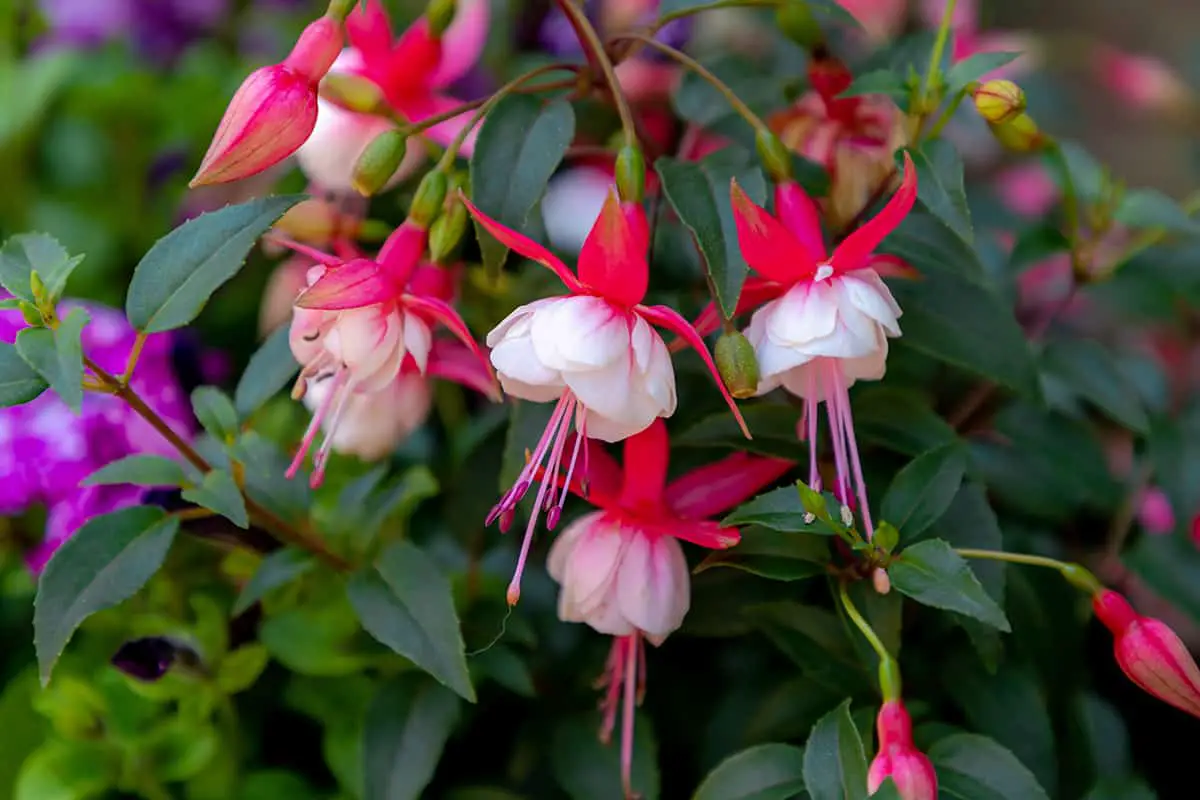Many garden favorites, like geraniums, thrive just as well indoors as they do outside. By bringing these adaptable plants inside, you can enjoy their vibrant colors and fresh greenery year-round, regardless of the weather. Let’s explore how to transform outdoor plants into thriving houseplants.
Table of Contents
- Boston Fern (Nephrolepis Exaltata)
- Rex Begonia (Begonia Rex-Cultorum)
- Fuchsia (Fuchsia spp.)
- Geraniums (Pelargonium Spp.)
- Hibiscus (Hibiscus Rosa-Sinensis)
- Gardenias (Gardenia Jasminoides)
- Lavender (Lavandula Spp.)
- Jasmine (Jasminum Spp.)
- Abutilon (Abutilon Spp.)
- African Violets (Saintpaulia Ionantha)
- Oxalis (Oxalis Triangularis)
- Camellias (Camellia Spp.)
Boston Fern (Nephrolepis Exaltata)
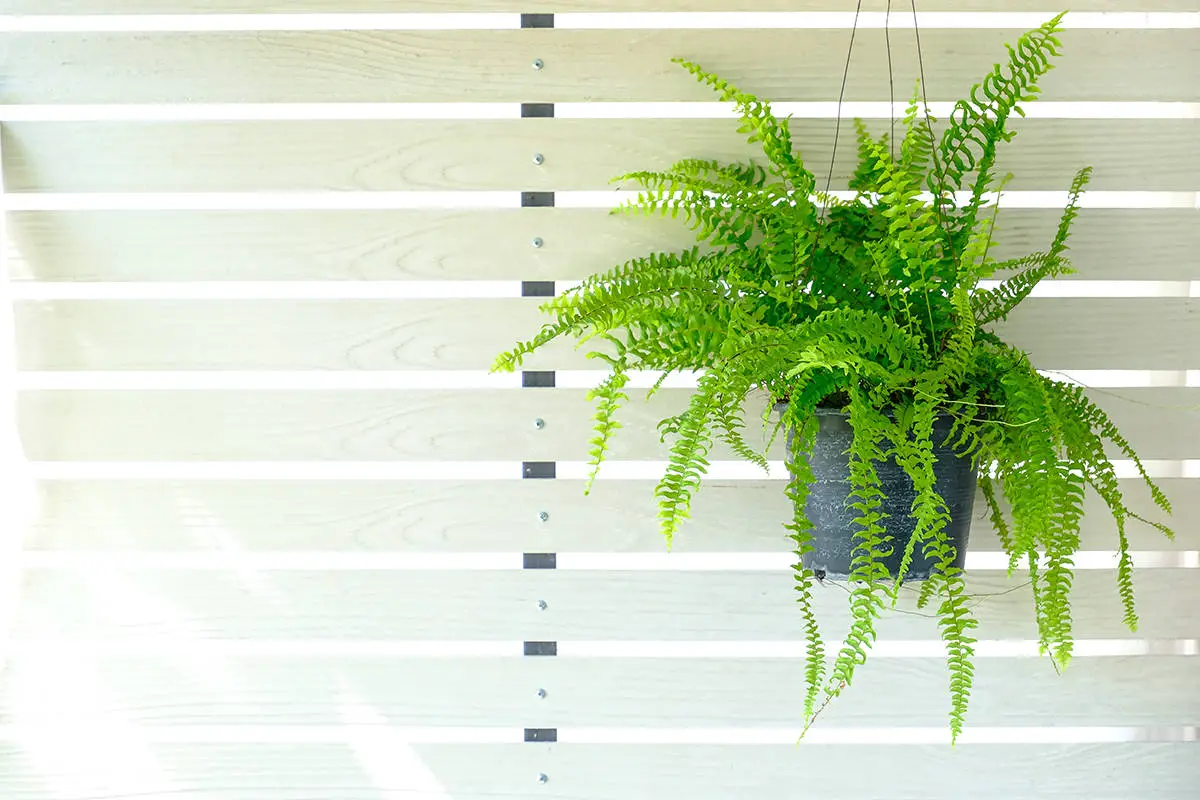
The Boston Fern, also known as Nephrolepis Exaltata, is a popular option when transforming outdoor plants into houseplants. Native to humid forests in regions such as northern South America, Mexico, Florida, and the West Indies, this tropical fern can grow up to 7 feet tall outdoors. However, as a houseplant, it often reaches a more manageable size with fronds up to 4 feet long.
To successfully cultivate your Boston Fern indoors, select a spot with bright, indirect light. Make sure the temperature stays within a comfortable range of 60-70 degrees Fahrenheit. Additionally, this plant prefers high humidity and moist soil, so you must never let the soil dry out completely. To further increase humidity, place your fern near kitchens and bathrooms or on a tray filled with wet pebbles. It’s also essential to reduce watering during the winter months when the plant requires less moisture.
Boston Fern is known for its lush green, feather-like fronds that emerge from an upright, underground rhizome. Each frond has numerous pinnae, which serve as the smaller leaf-like structures.
Rex Begonia (Begonia Rex-Cultorum)
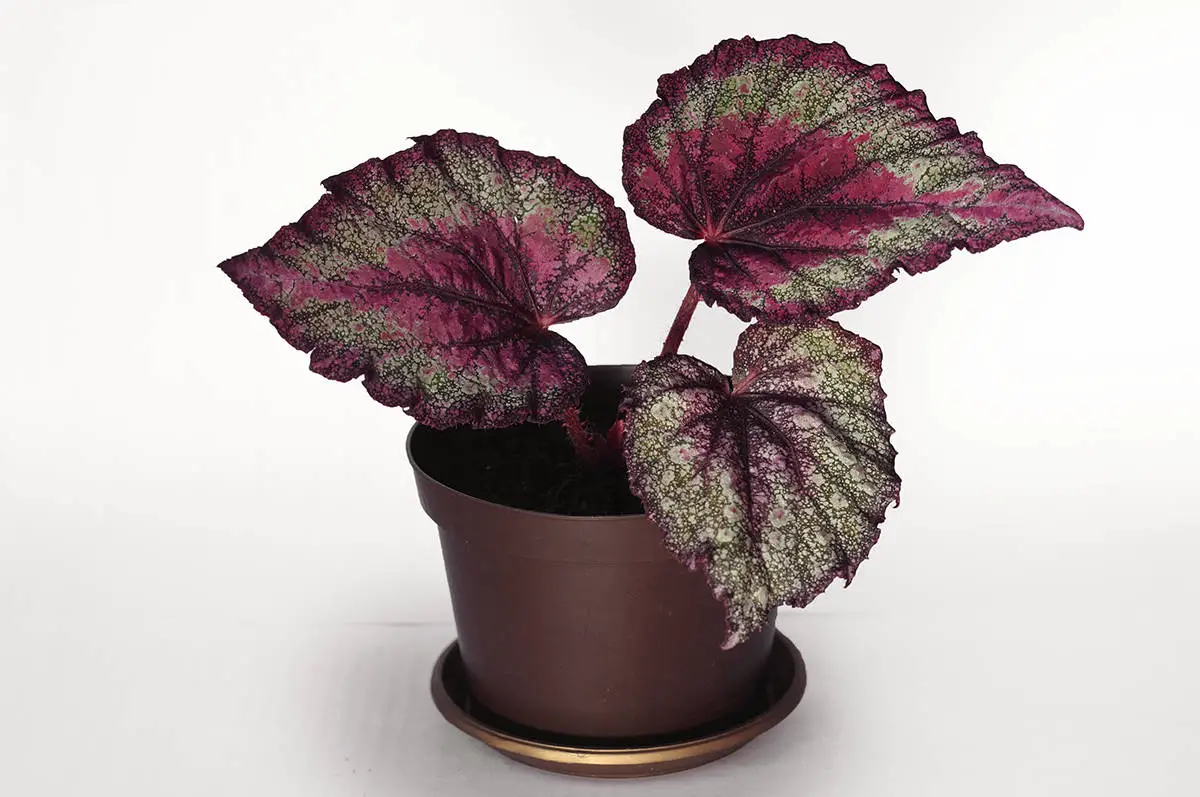
Rex Begonia is a remarkable houseplant, boasting spectacular leaf colors and textures. Originally adapted to USDA Hardiness Zones 7-12, it thrives in temperatures between 60°F-80°F. You may be happy to learn that some varieties, such as the Jurassic series, can acclimate to temperatures as low as 50°F or as high as 90°F.
To ensure healthy growth in your home, place these beauties in a spot that receives bright, indirect light. Prolonged direct sun exposure can damage the leaves. Water your rex begonia when the top inch of soil becomes dry, and provide well-draining soil to prevent root rot.
For aesthetic purposes, feel free to trim back the stems after the blooming season to promote bushier growth. Additionally, remember to maintain cool temperatures ranging between 72°F-80°F during the day and 60°F-65°F at night.
Good news for pet owners: rex begonias are non-toxic to cats and dogs. So, incorporating them into your living space adds a touch of nature without endangering your furry friends.
Fuchsia (Fuchsia spp.)
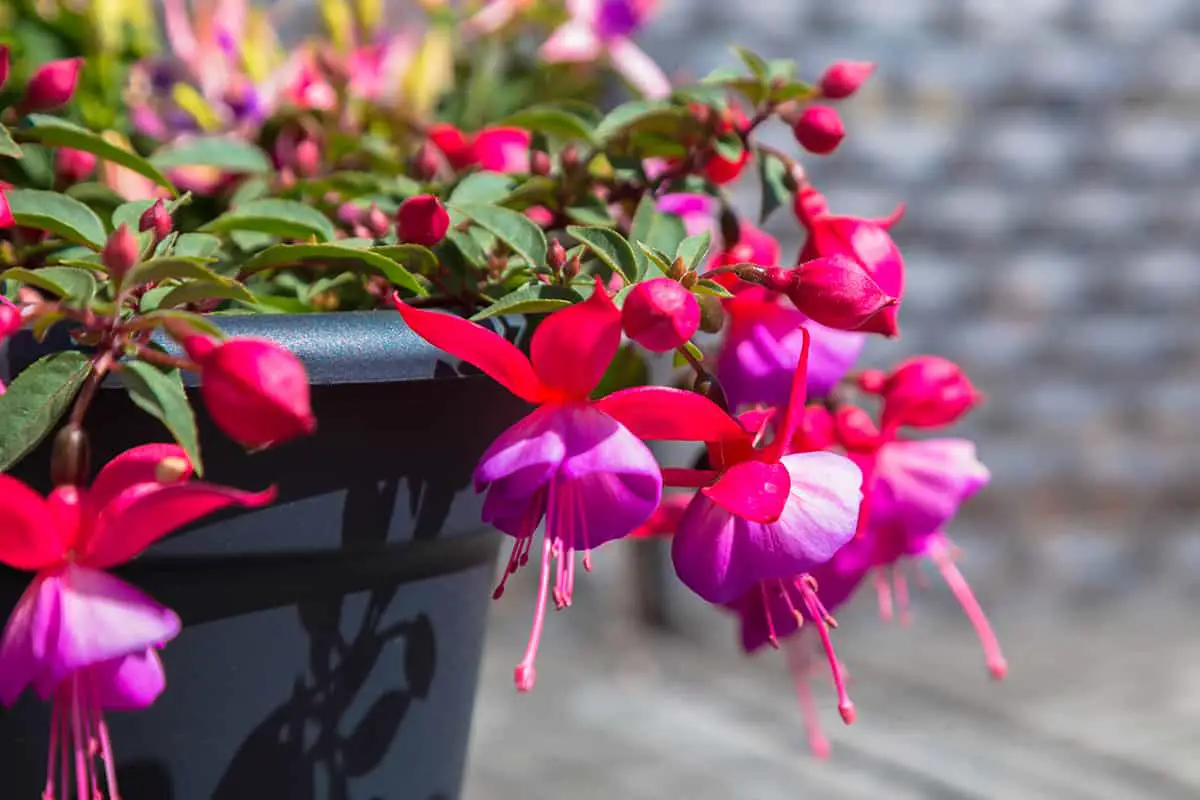
Fuchsia plants are popular perennials that can be easily transformed into houseplants. These plants are known for their beautiful hanging flowers and vibrant colors. With proper care, you can enjoy their beauty indoors throughout the year.
To start, select a healthy fuchsia plant from your garden. Choose one with good foliage and flowers. Next, carefully transplant the chosen fuchsia into an appropriate pot. Use a well-draining potting mix, providing the plant with enough space for its roots to grow. Regularly water your fuchsia, ensuring the soil remains moist but never soggy.
While fuchsias prefer bright light, keep your indoor plant away from direct sunlight. Instead, place it near a window with filtered light to support its growth. Fuchsia plants thrive in temperatures between 60 and 70°F, so maintain a comfortable room temperature for optimal results.
One challenge in keeping fuchsia plants indoors could be overwintering. You can prevent the plant from dying during this period by letting it enter dormancy. Follow these instructions to prepare the plant for dormancy, which includes reducing watering and moving it to a cooler location (around 50-55°F).
Remember that fuchsias need proper care to thrive indoors. Regularly trim the plant to remove dead leaves and promote new growth. This practice keeps your houseplant looking fresh and encourages more blooms. Additionally, keep an eye out for common pests such as fuchsia gall mites.
Geraniums (Pelargonium Spp.)
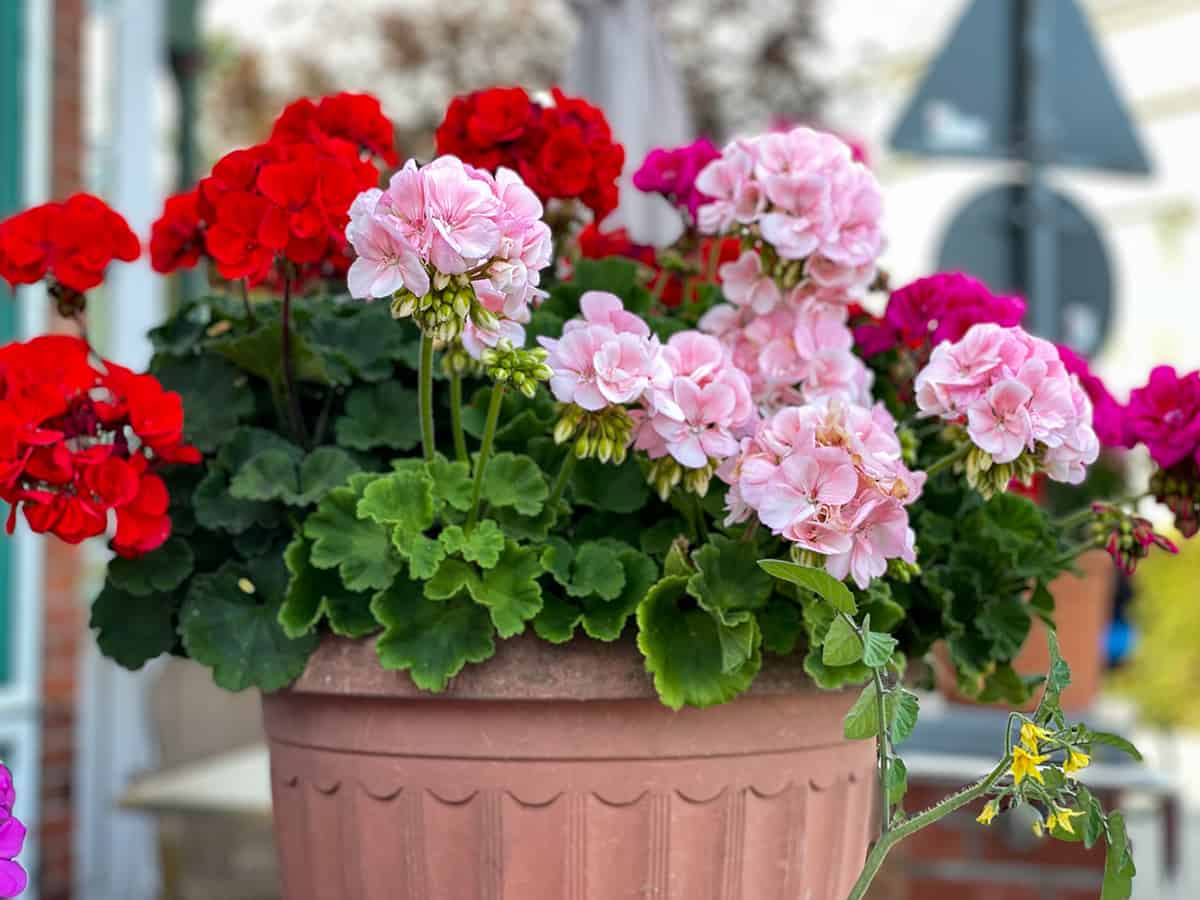
Geraniums, or Pelargonium, are excellent candidates for transforming outdoor plants into houseplants. These versatile plants have a wide variety of flower colors and growth habits, making them suitable for any room in your house.
To bring your geraniums indoors, first choose a well-lit spot near a window. Geraniums need at least six hours of full sun each day for optimal growth and flowering. Inspect the soil and water the plant when it feels dry to a depth of 2 inches.
When it comes to container options, select one with drainage holes and use a well-draining potting mix. Prune your geraniums regularly to promote their growth and remove spent flowers. This process will help your geranium maintain a neat appearance and stimulate new blooms.
Fertilize your geraniums every two weeks, which will promote healthy growth and flowering. These plants are quite low-maintenance, so with just some basic care and attention, you can enjoy their beauty all year round in your home. Remember to protect your geraniums from freezing temperatures and consider moving them outdoors during the warmer months to help maintain their overall health.
Hibiscus (Hibiscus Rosa-Sinensis)

Hibiscus rosa-sinensis, a member of the mallow family, is typically grown outdoors in warmer, tropical regions. However, you can also turn this beautiful plant into a houseplant with proper care. Its bold flowers, which can span up to six inches in diameter, add a touch of elegance to any room. Native to Asia, Hibiscus rosa-sinensis is a tropical evergreen that thrives indoors as long as you provide suitable conditions.
When transitioning your hibiscus to an indoor setting, remember that it requires a lot of sunlight. Place your plant near a south-facing window, so it receives at least six hours of direct sunlight daily. In terms of temperature, hibiscus thrives in a range of 60-90°F. However, during winter, ensure that it does not experience temperatures below 50°F, as this can cause damage.
One of the most important aspects of hibiscus care is watering. Water your hibiscus when the top inch of the soil feels dry, ensuring that the soil remains moist but not waterlogged. In addition, make sure to use a well-drained potting mix to avoid root rot. Fertilize your hibiscus with a slow-release fertilizer throughout the growing season and a liquid fertilizer with high phosphorus content during summer to encourage strong blooms.
Finally, be aware of pests and diseases. Regularly inspect your hibiscus for aphids, spider mites, and whiteflies, which can harm the plant. Wipe the leaves with a damp cloth to remove dust and pests. If necessary, treat your hibiscus with an appropriate insecticidal soap or horticultural oil.
Gardenias (Gardenia Jasminoides)
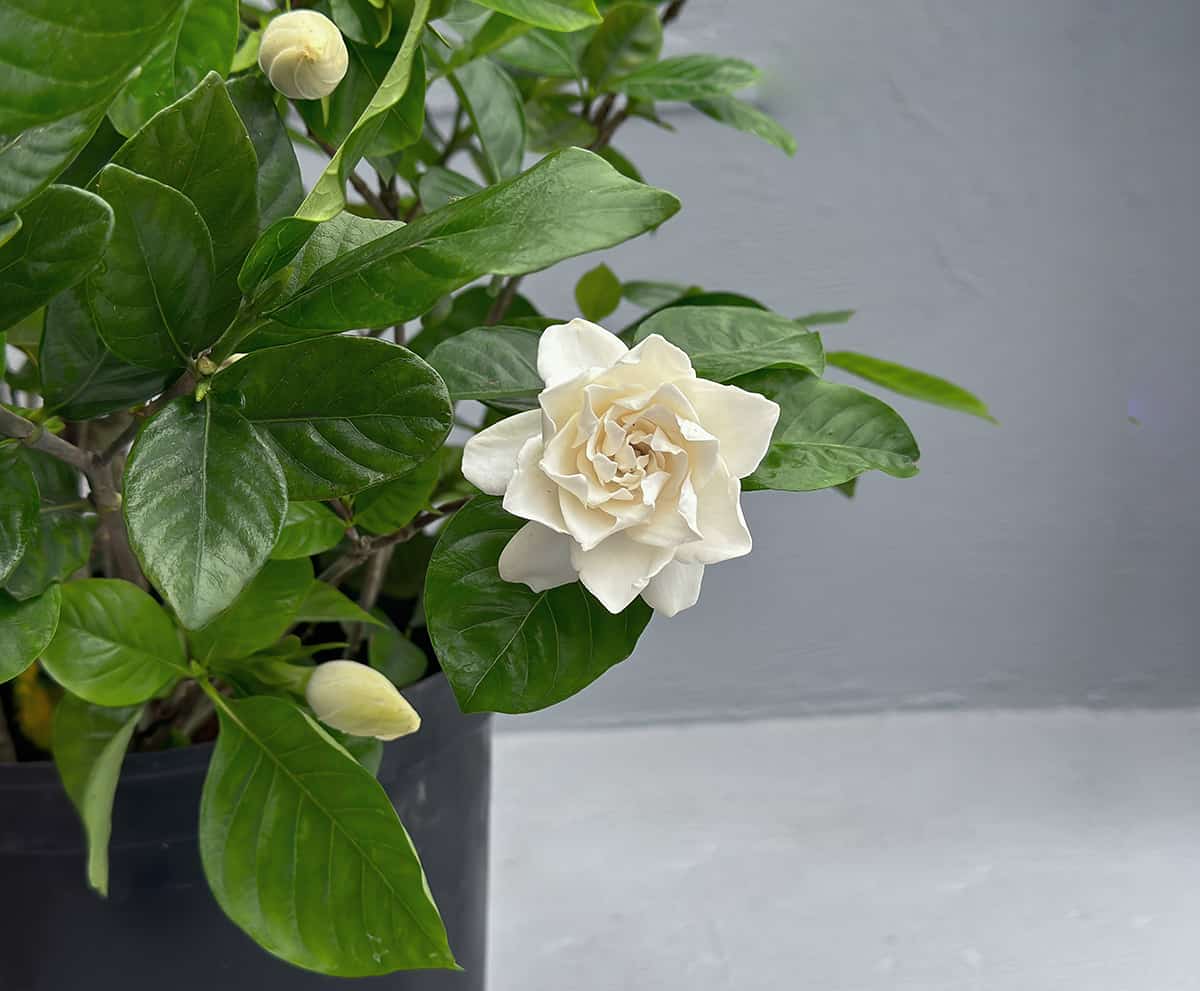
Gardenias are native to southern China, Taiwan, Japan, and Vietnam. These evergreen shrubs are known for their highly fragrant and showy flowers, as well as their thick, lustrous, dark emerald-green foliage. You can easily turn gardenias into stunning houseplants by following these simple guidelines.
First, find a suitable spot in your home for your gardenias. They prefer bright indirect sunlight or partial shade. Ensure the location provides adequate air circulation, as this can help prevent potential diseases and pests. Also, maintain a consistent temperature between 60-75°F (15-24°C) to optimize their growth.
When it comes to soil, gardenias are acid-loving plants that thrive in soil with a pH of 5.0 to 6.0. To keep your plant healthy, use a well-draining potting mix specifically designed for acid-loving plants. Water your gardenias regularly, ensuring the soil stays evenly moist but not waterlogged, as it can lead to root rot.
Pruning is essential for maintaining the shape of your gardenia. Prune them in spring and remove spent flowers to encourage continuous blooming. Refrain from fertilizing during fall, as this can lead to frost-tender growth.
Lavender (Lavandula Spp.)

Lavender, a popular plant in the Lamiaceae family, can be an excellent addition to your houseplant collection. Known for its beautiful and fragrant flowers, lavender is often a favorite among gardeners. You’ll appreciate the pleasant aroma and aesthetic appeal it brings to any indoor space.
Cultivating lavender indoors requires just a few simple steps. Firstly, find a location with abundant sunlight, as this plant thrives in warm, well-drained soil and plenty of sunlight. A south-facing window would be ideal for lavender. Secondly, use a well-draining potting mix to ensure proper moisture management. Lavender doesn’t grow well in overly damp soil.
Remember that your lavender plant needs proper care to flourish indoors. Make sure you water moderately and let the soil dry between waterings. Also, provide proper pruning to maintain the shape and encourage growth. This plant grows up to 1-3 feet tall and 1-2 feet wide, so plan a suitable pot size to accommodate its growth.
Lastly, your lavender plant will not only display lovely flowers, but it will also attract pollinators, such as bumblebees, if placed near an open window during warmer seasons. This added bonus helps promote a healthy ecosystem while enhancing the overall beauty of your indoor garden.
Jasmine (Jasminum Spp.)
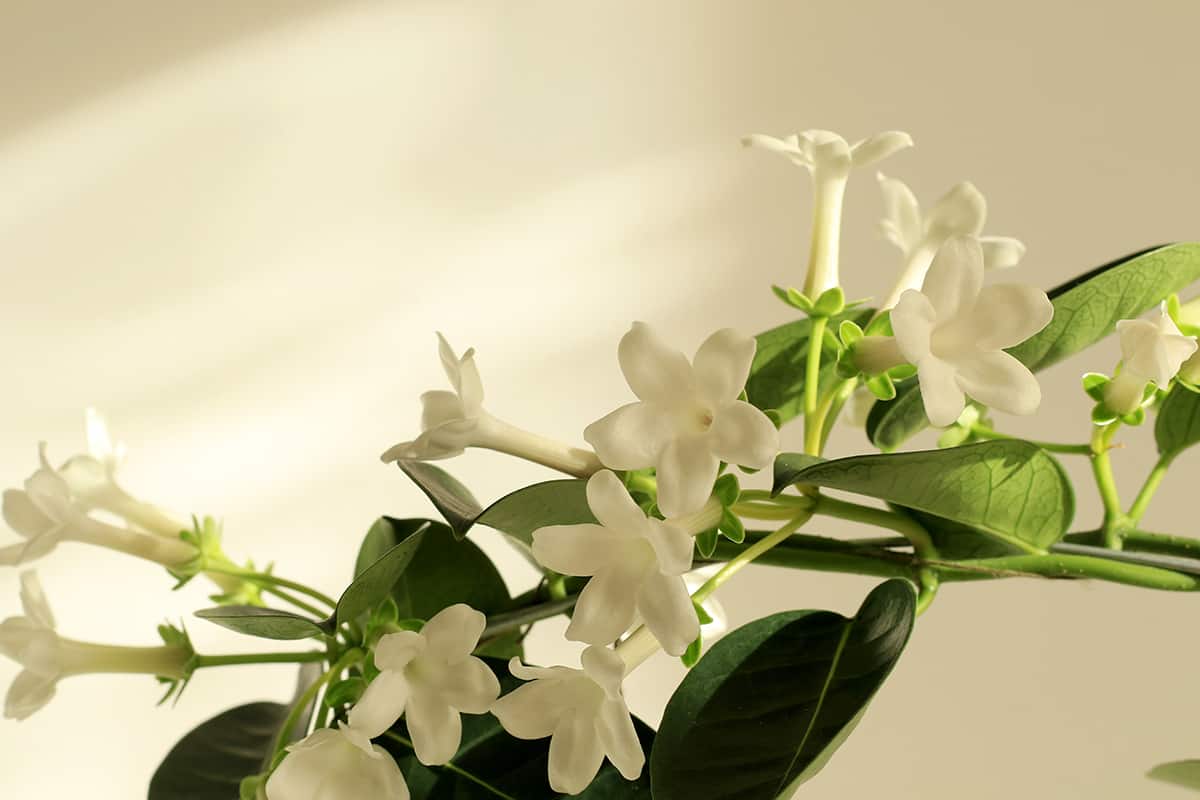
Jasmine plants belong to the Jasminum genus, which consists of over 200 species in the olive family. These versatile plants originate from tropical and subtropical areas. You can enjoy the captivating scent and beautiful flowers of Jasmine in your home, as many species can be successfully turned into houseplants.
To start, you’ll want to select a Jasmine species suitable for indoor conditions. Many species prefer at least four hours of direct sunlight daily or 14 to 16 hours of strong artificial light. Placing your Jasmine plant near a bright window or investing in grow lights can help your plant thrive indoors.
When transitioning a Jasmine plant from outdoors to indoors, ensure it has well-drained soil. These plants can adapt to various soil qualities, even poor soils. However, avoiding overwatering is crucial for the plant’s health. Additionally, maintain a moderate indoor temperature as Jasmine plants might not respond well to extreme temperatures.
Abutilon (Abutilon Spp.)

Abutilon, also known as Flowering Maple, is a beautiful plant that can thrive both outdoors and indoors. The genus consists of over 200 species found in tropical and subtropical regions. By following some simple guidelines, you can easily transform an outdoor Abutilon into a stunning houseplant.
To begin with, providing sufficient lighting is crucial for your Abutilon. They prefer bright, indirect light. You can place your plant near a window or use artificial light if necessary. In hotter climates, partial shade is recommended, as too much sun might stress the plant.
When it comes to watering, moderation is key. Overwatering can lead to root rot, while underwatering may cause the leaves to drop. Make sure the soil stays moist but well-drained. Most Abutilon species require moderate watering, while some need just a little to thrive.
The ideal temperature for Abutilon is between 60-70°F (15-21°C). It is important to protect your plant from drafts and sudden changes in temperature. This tender houseplant appreciates consistent environmental conditions, as well as regular fertilizing during the growing season.
Finally, keep an eye out for pests and diseases. Spider mites and whiteflies can be an issue for indoor Abutilon plants. Regularly inspect the foliage and treat with insecticidal soap if necessary.
African Violets (Saintpaulia Ionantha)
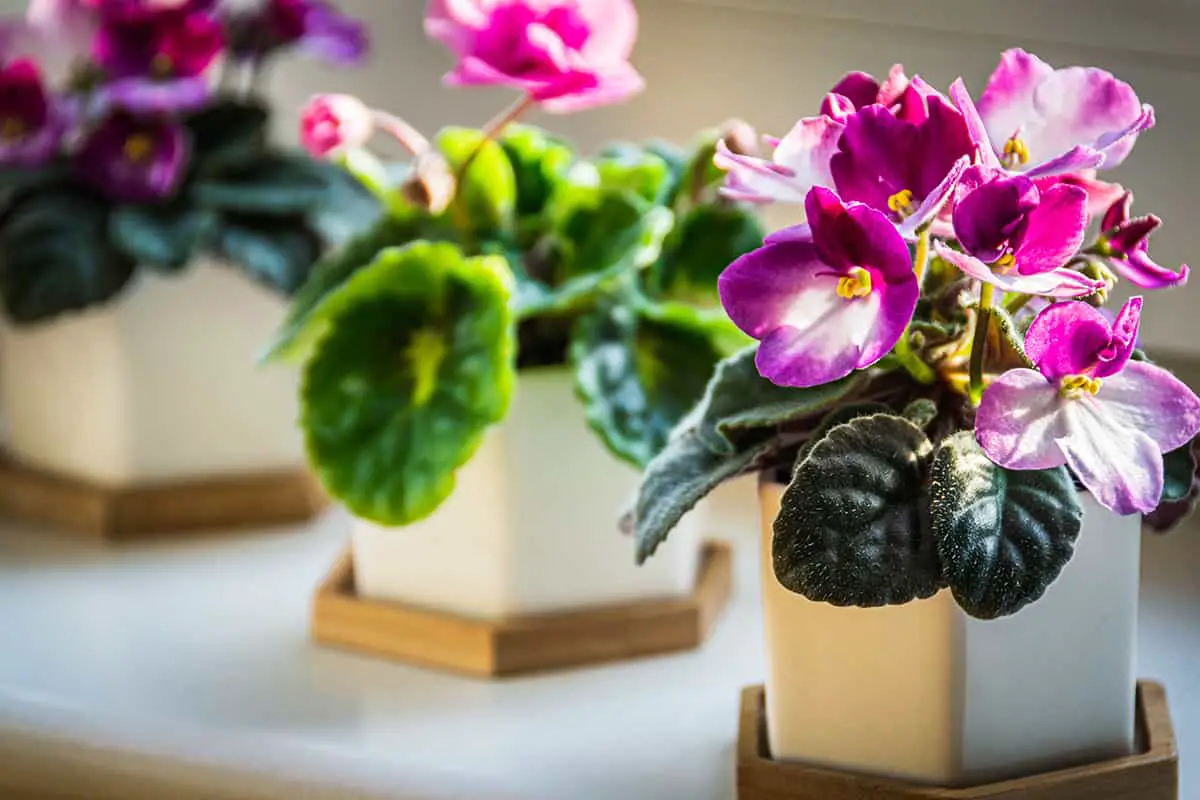
African violets, also known as Saintpaulia ionantha, are native to Tanzania and belong to the Gesneriaceae family. These beautiful flowering plants can be a striking addition to your indoor garden.
To care for your African violets, choose a location with indirect, filtered sunlight. A north, northwest, or northeast-facing window is ideal. If you can’t provide optimal natural light, you can supplement with fluorescent lights. Keep in mind that African violets thrive in temperatures between 60° and 80°F, which is similar to what humans enjoy.
You can propagate African violets through leaf cuttings to save a damaged plant or grow your collection. Supplies needed for propagation include an established plant, light potting soil medium, such as peat moss and perlite mix, and a small pot.
African violets can also be grown from seeds, but few varieties are successful with this method. Under ideal conditions, it takes about 10 months to produce a flowering plant from seeds or leaf cuttings.
Oxalis (Oxalis Triangularis)
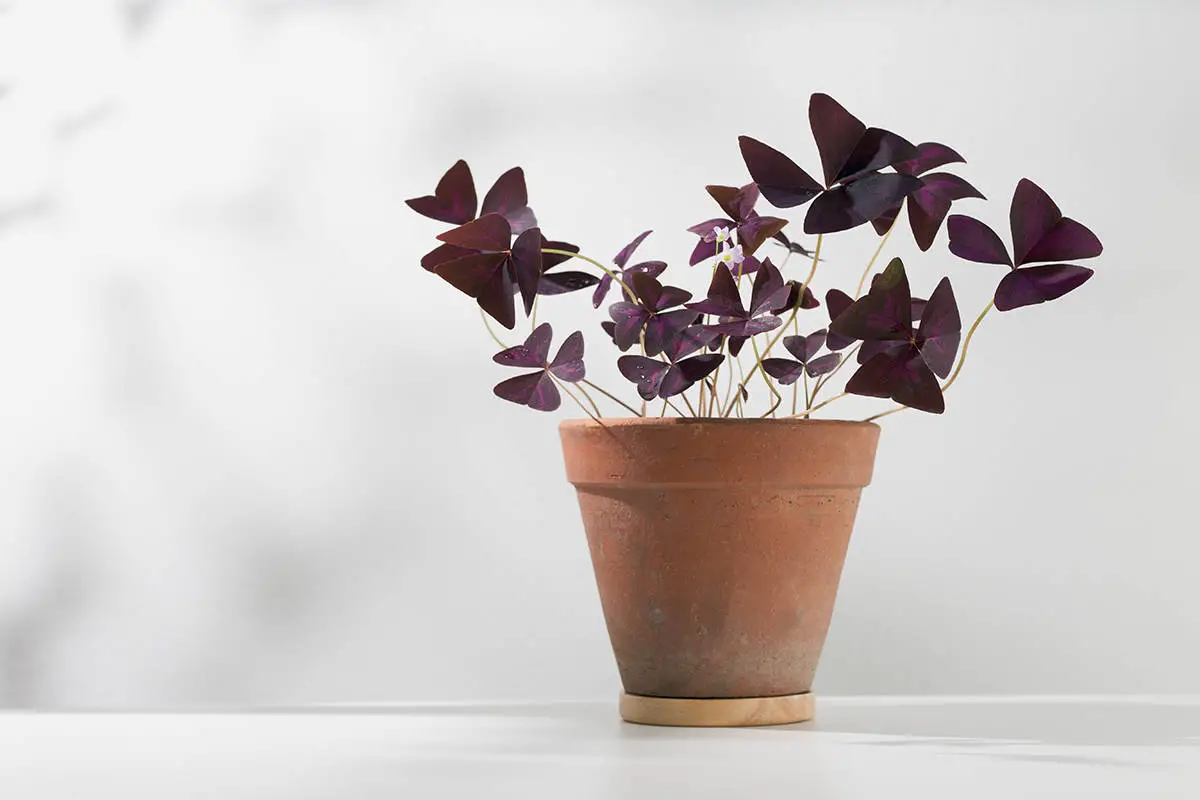
Oxalis Triangularis, commonly known as False Shamrock, is a low-growing plant with vibrant, clover-shaped leaves. Its trifoliate leaves come in various colors, including green, maroon, and purple. A remarkable feature of these leaves is their nyctinastic behavior, meaning they close up at night or, when disturbed, reopen during daylight.
Normally grown outdoors, in most areas, Oxalis needs to adapt to life as a houseplant. It needs bright light, so place it in a spot that receives full sun to partial shade. Allow the surface of the soil to dry between watering, as it prefers well-drained soil. Don’t worry if the plant appears dormant; just cut back on watering and wait for new growth to emerge.
Flowering in spring to summer, Oxalis showcases white to pink blooms held above the plant on stems. These delicate flowers also follow the plant’s closing pattern during nighttime.
Camellias (Camellia Spp.)

Camellias are popular flowering plants that can thrive indoors with proper care. These stunning evergreen plants are known for their cool-season blooms, adding beauty to any indoor space. To ensure your camellias flourish in your home, consider a few essential factors.
First, provide adequate lighting conditions. Camellias prefer bright, indirect light, so place them near a window with filtered sunlight. Direct sun exposure can scorch their leaves, while low light levels may hinder optimal blooming.
Next, temperature and humidity in their environment should be regulated. Camellias are sensitive to extreme temperatures; therefore, a consistent temperature between 65°F and 75°F is most suitable. You can maintain humidity levels by using a humidifier, placing a water-filled pebble tray near the plant, or frequently misting the leaves. Always avoid exposing your camellias to drafts or heating vents.
Proper watering is also crucial for camellias grown as houseplants. Water your camellias thoroughly when the top inch of soil feels dry to the touch. Ensure adequate drainage to prevent root rot, as camellias are susceptible to this issue. Additionally, applying a balanced, slow-release fertilizer will support their overall health and growth.
